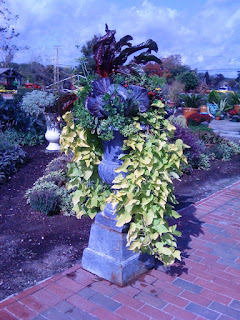
Here in Warwick, we got about 15 or so inches. Since it was light, it blew around a lot. Some places in my yard looked like we had a couple of inches and in some spots it was mid chest on Lars. Aquidneck Island got slammed with 20 - 24" which high winds formed into monstrous drifts . Eric has been plowing over there Saturday night, Sunday, and most of today. The drifts won't quit...some are as tall as Eric. I was over there today and the main roads are so bad with drifts they are controlling them with loaders on the side of the roads. I've never seen anything like it including when I lived in Central NY...now that's saying something. Eric thinks he may be home before midnight...he's being hopeful.

Lake Larson has been reduced to large piles of snow and some stakes sticking out of the ground where the nets are for the heron. They flash froze in there...looks like they may be there until spring. There is one little hole in the snow where the air stone bubbles away keeping a hole open for gas exchange.

Of course, after a snow storm, one has to go out and play with their dog. I'm not sure if Lars remembered snow from last winter, but he sure had a blast out there. He kept going to the door asking to head back out there and romp some more. After Old Man Winter dealt us a punishing blow earlier in the day, he softened and painted the sky with a sunset which I haven't seen the likes of in a long time.

Red sky at night, snow plowers' delight...

Lars was not as impressed with the sunset as I was...all he wanted to do was chase his ball which was behind me. Sometimes he just humors me and my need to pose him in my photos.
Just this last week, I had moved the bird feeders up close to the house where I can easily see who's coming to dinner. It never ceases to amaze me how quickly they find them. I decided not to do the Great American Bird Feeder Count with Cornell's Department of Ornithology. I always have great intentions, log my birds for about a month, then I forget. So, I'm just going to enjoy the birds this winter. Just an informal tally of who's shown up so far: Cardinals, Juncos, Titmice, Chickadees, Nuthatches, House Sparrows, House Finches, Goldfinches, Blue Jays, White Throated Sparrows, and Carolina Wrens. Now that I have written it all out, that's a healthy guest list.














































